..indoor garden.. (18-03-2019) [1of××]
I know it should have been updated much earlier but..Life is like a roller coaster with many ups and downs, and as the saying goes,'When life gives You lemons..',
I make lemon tea!!
(cause sugar is bad for You)!!Does it make sense?! Probably not, but continue reading and You might like it xP
For better access to the entire series, in the end of each post will be a list of 'Previous posts:' both from this series as from previous '..indoor garden..' posts, as soon as the next post of the series is published, it will be added to the 'Next post:' section!
This lovely mushrooms appear now, randomly in all my vases, usually they just appeared in 'the box' (You'll find out more about in previous and future posts), and they were a pain in the a$$ to identify but I've learned some new things about nature in general so it ended up being very cool (a big thank You!! to who cheered and pulled me up enough to continue, cause I was not feeling that well.. You know who You are, 'Arigato gozaimasu' ^^P), and with some strength from the infinite source of everything, I decided to not just show photographies of the indoor garden and their respective species names, and added a bit more..
(A lot of work, is what it was!)
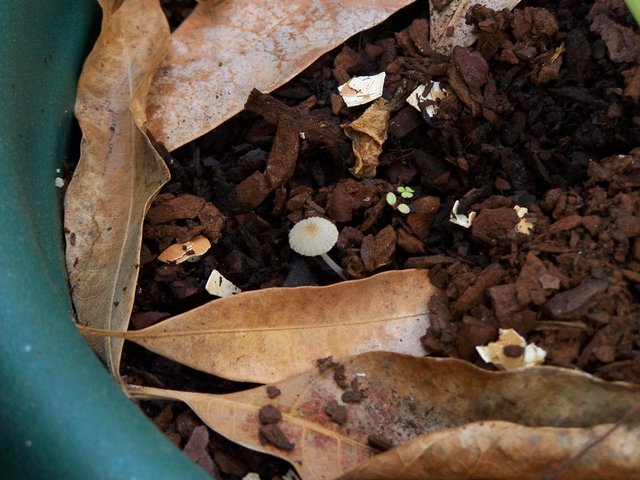
Division: Basidiomycota
Class: Agaricomycetes
Order: Agaricales
Family: Mycenaceae
Genus: Mycena
Species: Mycena vulgarisBut I had my doubts and my instinct was right, it is not a Mycena Vulgaris..
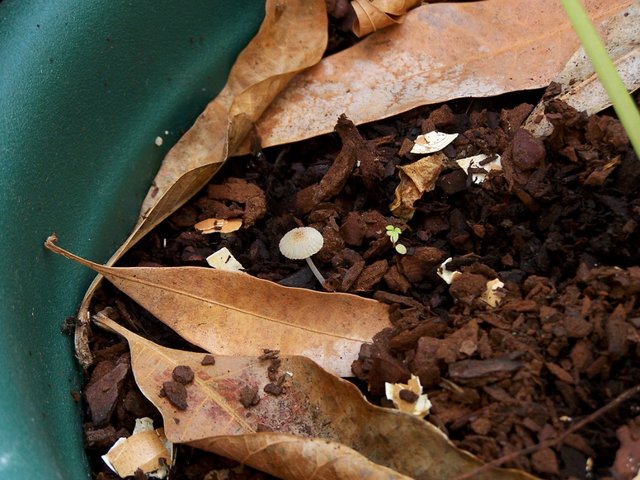
Division: Basidiomycota
Class: Basidiomycetes
Order: Agaricales
Family: Mycenaceae
Genus: Mycena
Species: Mycena leptocephalaMycena leptocephala is classified in the section Fragilipedes of the genus Mycena, along with other similar looking mushrooms, such as Mycena aetites, Mycena austera, Mycena parca, and Mycena aronsenii. Some of them with a nitrous smell similar to Mycena leptocephala.Mycena leptocephala is also from a saprotrophic specie. (saprotrophic, meaning that it lives and feed on dead organic matter)Found In North America, in Canada (British Columbia, Manitoba, Nova Scotia), to Washington and south to California and North Carolina. In South America, has been collected in Venezuela. It also grows in the Archipelago of the Recherche, off the southern coast of Western Australia. In Europe, it is known from Britain, Finland, The Netherlands, Norway, Spain and Portugal. In various locations in Asia: the Vindhya Range of India, the Gwangneung Forest Museum in the Korea National Arboretum, the alpine zone of Changbai Mountain Nature Reserve, Jilin Province, China. Also found in Arctic and Alpine regions such as Iceland, Greenland, and the Murmansk region.
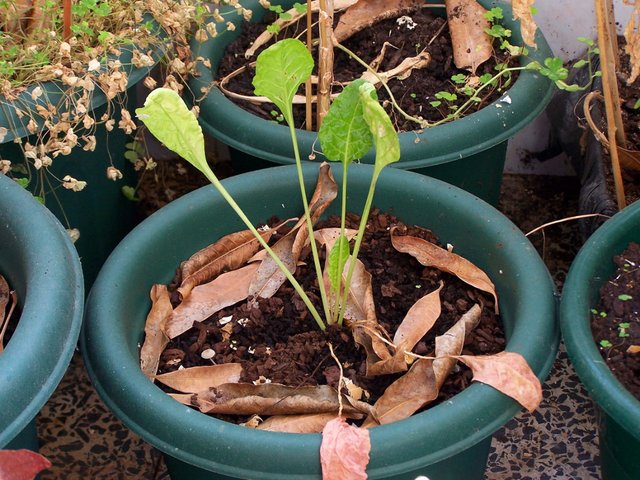
Clade: Angiosperms
Clade: Eudicots
Order: Caryophyllales
Family: Amaranthaceae
Genus: Spinacia
Species: Spinacea oleraceaHelps preventing iron-deficiency anemia, neural tube defects, cancer, improves vision or eye sight, lowers cholesterol, boosts immunity, heart health, protects the skin, fights inflammation and does a lot more, due to the fact of being rich in vitamin A, vitamin C, vitamin K, magnesium, manganese, iron and folate, also is a very good source of B vitamins, riboflavin and vitamin B6, vitamin E, calcium, potassium, and fiber.But be aware of the harm/side effects of too much spinach comsuption..Poor mineral absorption, since spinach contains a lot of oxalic acid, which bind with several essential mineral compounds like calcium, magnesium, zinc, .., the body might become unable to absorb enough minerals.Stomach disorders, being spinach a rich source of fiber which is good for healthy digestion, our body still needs time to get accustomed to it. Reason why it can cause stomach disorders such as: gas formation in the abdomen, bloating, cramps and even constipation when eaten in excess.Diarrhea, also caused due to excessive ingestion of high fiber foods, so, if you keep consuming spinach along with other foods high in fiber, You'll probably end up developing loose motion like conditions, along with fever and abdominal pain.Anemia, although spinach can help prevent iron-defeciency anemia, it can sometimes make it difficult for the body to absorb the required amount of iron from foods, for being full of nonheme (plant-based iron), which the body can’t take in easily, leading to iron deficiency.Kidney Stones, can be caused by ingestion of large amounts of purines (which spinach is also rich with). The body converts purines into uric acid, and an excessive amount of uric acid can increase the precipitation of calcium in the kidneys, resulting in the development of, small to medium-sized kidney stones. The oxalic acid is also responsible for this as it gets combined with the calcium of foods and forms calcium oxalate precipitation.Gout, can be caused by purines, which get metabolized inside the body and eventually increase the amount of uric acid. So, if You're prone to diseases like gouty arthritis, put a stop to excessive spinach consumption. Else, you will end up developing serious joint pain, inflammation and swelling.Teeth coarseness, is one of the common side effects of eating too much spinach. The oxalic acid forms small crystals, which does not dissolve in water, therefore, you may find teeth turning a bit coarse or gritty after consuming it. However, this is temporary and you can get rid of it by brushing your teeth.Allergic Reactions, may occur (rarely) because spinach contains histamine, which can cause some minor pseudoallergic effects. Immunoglobulin E (IgE) mediated allergy to the plant is quite common.Changes in anticoagulation, due to the presence of a high level of Vitamin K, the hepatic synthesis may be affected. (watchout for allopathic anticoagulatory drugs)..But don't despair if You like to eat spinach, just don't over-eat it and to minimize the risk, add olive oil to raw leaves, lemmon juice, or any other vitamin C source to help break iron and calcium so You don't overload, in a salad for example, add beside the olive oil and lemon juice, tomatoes. ;)
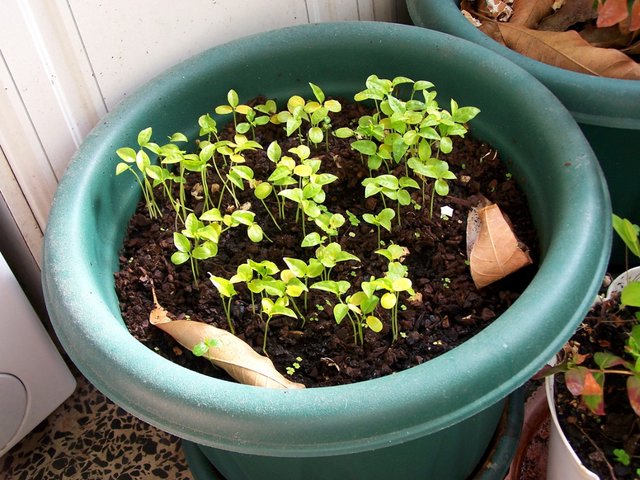
Clade: Angiosperms
Clade: Eudicots
Clade: Rosids
Order: Malpighiales
Family: Passifloraceae
Genus: Passiflora
Species: Passiflora edulisFlowers, leaves, peels and stems are used as medicine. The leaves contain alkaloids which lowers blood pressure naturally. The flower can be used as sedative and antispasmodic, passion flower also can be used to treat asthma, bronchite, arthritis, nervous disorders, insomnia, gastrointestinal disorders and menopause symptoms. Carotenoids and polyphenols of the yellow fruit extract (from Passiflora incarnata not the ones in the photography) can also kill cancer cells in vitro.
Clade: Angiosperms
Clade: Eudicots
Clade: Rosids
Order: Malpighiales
Family: Passifloraceae
Genus: Passiflora
Species: Passiflora incarnata
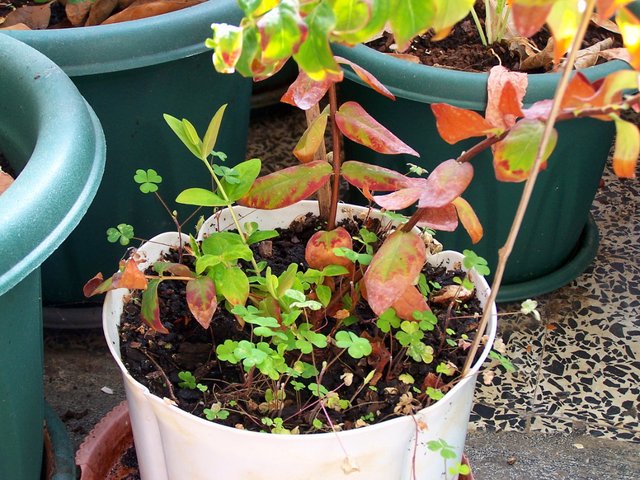
Clade: Angiosperms
Clade: Eudicots
Clade: Rosids
Order: Malpighiales
Family: Hypericaceae
Genus: Hypericum
Section: Hypericum sect. Androsaemum
Species: Hypericum androsaemumThe leaves are diuretic, can make a stomachal tonic and due to antiseptic properties has been used to cover open wounds.
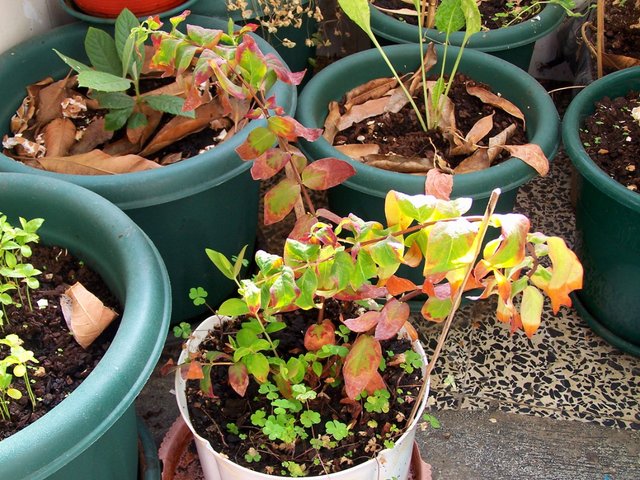 ·
·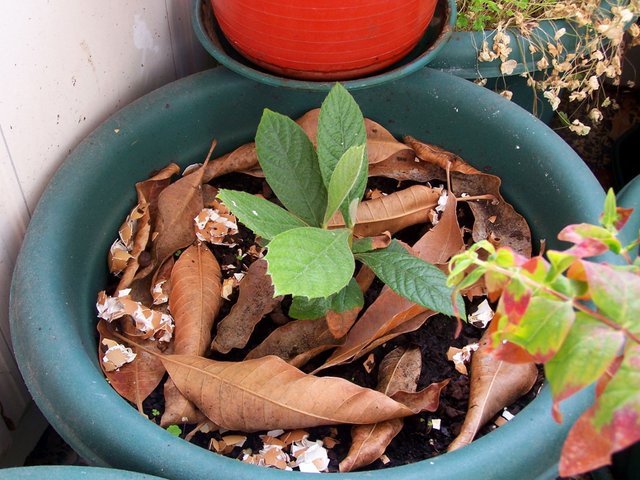
Clade: Angiosperms
Clade: Eudicots
Clade: Rosids
Order: Rosales
Family: Rosaceae
Genus: Eriobotrya
Species: Eriobotrya japonicaLoquat syrup is used in Chinese medicine for soothing the throat and is a popular ingredient for cough drops. The leaves, are mixed with other ingredients to make pipa gao ("loquat paste"), act as a demulcent and expectorant, as well as to soothe digestive and respiratory systems.In Japan, loquat leaves are dried to make a mild beverage known as biwa cha, believed to beautify skin and heal skin inflamations such as psoriasis, eczema and heal bronchitis. Loquats can have a slight sedative effect (that might last 24 hours). Loquat is one of the most popular cough remedies in the Far East, leaves are analgesic, antibacterial, antiemetic, antitussive, antiviral, astringent, diuretic and expectorant. Flowers are expectorant. The fruit is slightly astringent, expectorant and sedative. It is used in allaying vomiting and thirst.
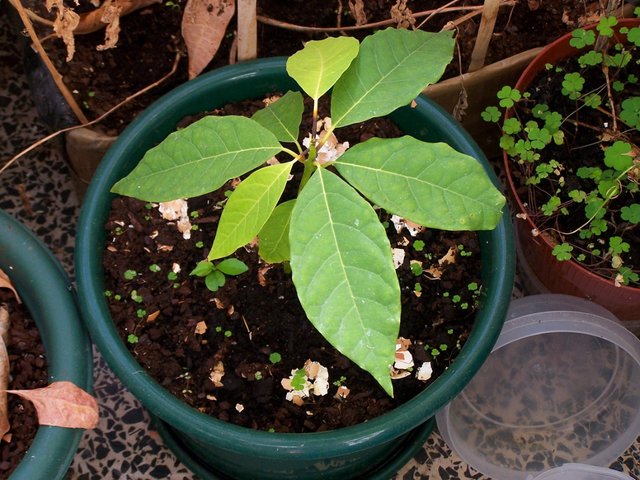
(unranked): Angiosperms
(unranked): Magnoliids
Order: Laurales
Family: Lauraceae
Genus: Persea
Species: Persea americanaAccordigly to traditional and folkloric medicine is good for skin problems, used in traditional medicine by various cultures, for treating small cuts and wounds both with and without pus (with the pulp), as mouthwash and to relieve toothaches (as a decoction from seeds), to promote menstruation (with a decoction made of pulp, bark and leaves), skin irritation (with ointment made from pulverized seeds), to alleviate pain associated with rheumatism (with grounded seeds and bark, mixed with oil), and alleviate itchiness and pain caused by sunburn (with the flesh).From a scientific perspective it is suggested it has a significant efficacy in the treatment of symptomatic osteoarthritis of the knee and hip 9433873In cancer prevention because it contains bioactive subtances with carotenoids that act synergistically with other phytochemicals that contribute, to the significant cancer risk reduction associated with a diet of fruits and vegetables. 15629237Improvement of cholesterol level in blood since it contains oleic acid and linoleic acid, both effective in lowering the bad LDL cholesterol level in the blood while increasing the good HDL cholesterol level 8987188It is also a healty weight reducing, appetite depressant, its defatted pulp has the ability to reduce the body weight. Although when added to foods with a high level of cholesterol, the hepatic fat or fat in the liver is reduced while the cholesterol levels in the blood remain high, suggesting that the avocado function as an appetite depressant, it can also interfere in the liver’s ability to metabolize fat. 12097685In the avocado peel, pulp and seed extract, You can find phenolic compounds such as catechins, procyanidins, hydroxycinnamic acid and hydroxybenzoic acid, all of them exhibiting antioxidant activity in vitro.21480593
Most of the sources for this post are from Wikipedia and the sources presented in the respective pages, not a copy paste post.. Sources from ncbi have their respective pages linked.. For the Wikipedia search, just use the species in photography titles and You can get most of the information presented in this post, if needed search on any search engine the same way as on Wikipedia, a lot of knowledge was previously known due to Years of personal study
Previous posts:
·..indoor garden.. (26-10-2018)·..indoor garden.. (14/15-11-2018)
Posts list:
·..indoor garden.. (18-03-2019) [1of××] ← You are hereNext post:
·..indoor garden.. (18-03-2019) [2of××]In Lak'ech Ala K'in
Photos shot with a Kodak DX7590 Digital Zoom Camera
Edited with GIMP · GNU Image Manipulation Program software


Congratulations @cyberspacegod! You have completed the following achievement on the Steem blockchain and have been rewarded with new badge(s) :
You can view your badges on your Steem Board and compare to others on the Steem Ranking
If you no longer want to receive notifications, reply to this comment with the word
STOPTo support your work, I also upvoted your post!
Do not miss the last post from @steemitboard:
Hi, @cyberspacegod!
You just got a 0.06% upvote from SteemPlus!
To get higher upvotes, earn more SteemPlus Points (SPP). On your Steemit wallet, check your SPP balance and click on "How to earn SPP?" to find out all the ways to earn.
If you're not using SteemPlus yet, please check our last posts in here to see the many ways in which SteemPlus can improve your Steem experience on Steemit and Busy.